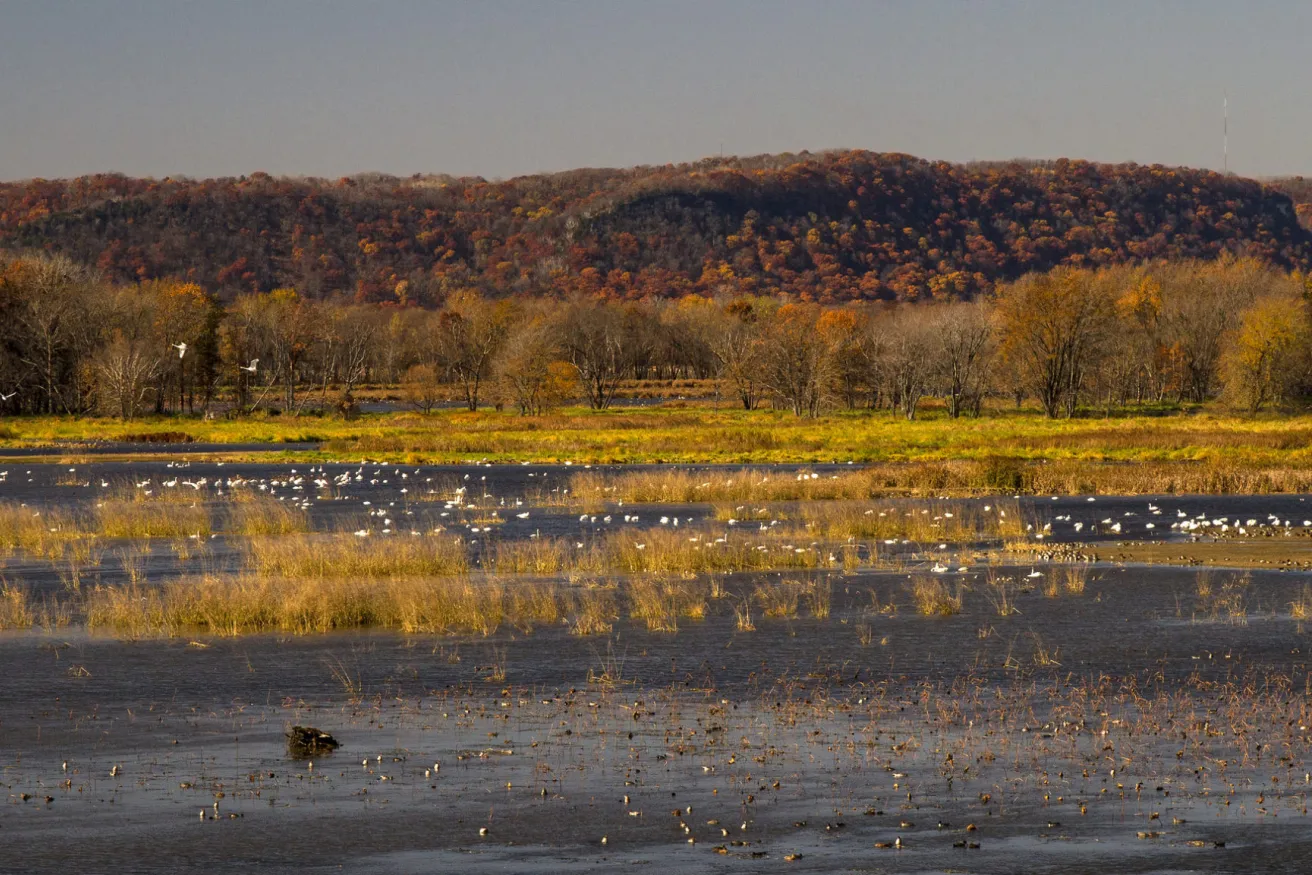The Arbor Day Foundation is pledging 10 million trees to areas impacted by hurricanes Helene, Milton Help us replant
Birds rely on trees for many things. Food. Shelter. Nesting material. Protection from predators. But did you know that forestland is also often critical for migratory birds?
Today, World Migratory Bird Day, is a great reminder of just how much trees can support the wildlife we love. And the Mississippi Alluvial Valley is an excellent example of this.
The Mississippi Alluvial Valley is a bottomland hardwood ecosystem along the Mississippi River. It is considered one of the most important critical wetland resources on the North American continent.
This area also serves as vital habitat for migratory birds and numerous plants and animal species. An estimated 40% of North America’s waterfowl and 60% of all bird species migrate along the Mississippi River, although their populations have dwindled from habitat loss. Originally, the river valley was covered with 25 million acres of forestland, but currently less than 5 million forested acres remain.
The lack of trees has dramatically affected the ecosystem. The loss of this critical resource has resulted in a decline in wildlife as well as in water quality, leading to an increasing dead zone in the Gulf of Mexico. In addition, there has been a loss of the natural flood control buffer.
Planting for the Birds
To support migratory birds — as well as the ecosystem as a whole — the Arbor Day Foundation has partnered with GreenTrees to reforest the region. Together, we are working with local farmers to restore areas of Arkansas, Mississippi, Louisiana, Kentucky, Illinois, Missouri, and Tennessee. The goal of the project is to create forests that landowners will permanently maintain due to financial incentives such as carbon credit sales, wood products, and recreational services as well as the ecological benefits of restoring wildlife habitat. This work will create a sustainable income stream that will ensure forest preservation and a continued commitment from farmers.
As the trees are planted, the flyway is slowly returning to its natural state, offering respite for the migratory birds of North America make their annual journey through the area.

